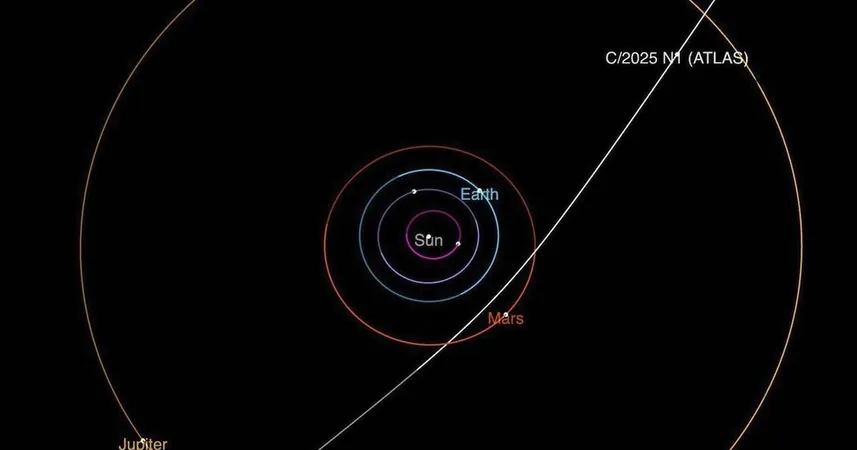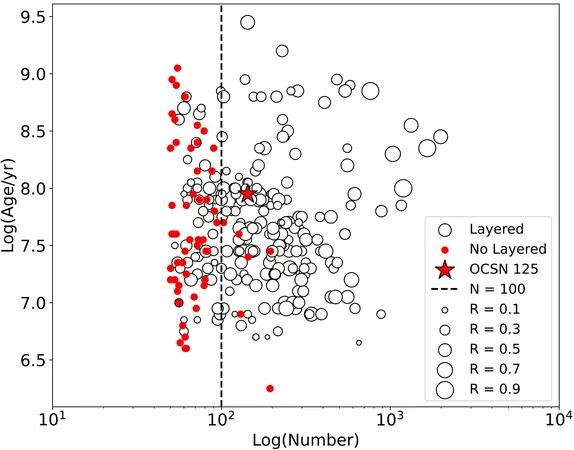
The Unsung Hero: How Tycho Brahe Transformed Our Understanding of the Universe
2024-11-12
Author: Benjamin
In five centuries, when humanity looks back at our current understanding of the universe, we might be astounded by just how naive we were in the early 21st century. One of the key figures deserving of recognition is the remarkable 16th-century Danish astronomer, Tycho Brahe, whose pioneering work laid the foundation for modern astronomy long before telescopes revolutionized the field.
Tycho Brahe stands out as one of the first astronomers to advocate the importance of systematic and precise measurements in celestial observations. Lars Occhionero, a curator at Denmark’s Kroppedal Museum, emphasizes this point, highlighting that Brahe’s meticulous approach was a pivotal principle of the scientific method applied to a primarily observational science.
Born into an aristocratic family in Denmark, Brahe possessed both the resources and the ingenuity needed to craft sophisticated instruments that extended the limits of observational astronomy. His work would mark the dawn of a scientific revolution—a milestone reached fifty years prior to Galileo's famous telescopic observations of the moon.
One of Brahe’s most significant contributions was his observation of a 'nova,' which we now recognize as a supernova. On November 11, 1572, he spotted an extraordinarily bright star in Cassiopeia, a discovery that reshaped our understanding of stars. At the time, the notion that stars could change or move was revolutionary. This newfound awareness that stars were not fixed entities in the sky, but distant bodies undergoing change, marked a crucial turning point in astronomy.
Brahe’s observations laid bare that this new star did not move against the background of fixed stars, indicating its vast distance from the Earth. His assessments were so precise that they have been corroborated by modern astronomical tools like NASA’s Chandra X-ray Observatory, which noted the rapid expansion of material from the same supernova he recorded, designated SN 1572.
In recognition of his groundbreaking work, King Frederick II of Denmark granted Brahe the island of Hven in 1576, a strategic location for astronomical studies. Here, Brahe established an observatory, where he was not only able to observe the skies but also to print and disseminate findings from his research. This observatory became a hub of knowledge, attracting nearly 100 students and artisans, including the illustrious Johannes Kepler, who would later build on Brahe's observations to formulate the laws of planetary motion.
What set Brahe apart from his predecessors was his innovative underground observatory. The wind on Hven was problematic for observations, so he ingeniously created a subterranean facility that afforded an unobstructed view of the heavens while shielding sensitive instruments from turbulent airflow. With inaccurate yet groundbreaking instruments, Brahe achieved remarkable accuracy, measuring celestial positions to within two arcminutes—double the precision of the best observations made by Ptolemy and ancient astronomers.
Brahe’s astute methodologies paved the way for future astronomical breakthroughs. His catalog of roughly 1,000 stars became a pivotal resource for Kepler, whose work would ultimately unlock the principles governing celestial mechanics that culminated in Newton’s laws of gravitation.
It's fascinating to note that, although Brahe did not live to see the full realization of his contributions (he died in 1601), his legacy perpetually courses through the very fabric of astronomy. If he could have viewed the cosmos through a telescope, the trajectory of science might have shifted even more dramatically.
In conclusion, as we harness the power of advanced space telescopes and innovative technologies, let us not forget Tycho Brahe—the unsung hero whose unwavering commitment to precise observation transformed our understanding of the universe. The quest for knowledge is never-ending, and Brahe's legacy serves as a testament to the relentless pursuit of truth in the expansive field of astronomy.









 Brasil (PT)
Brasil (PT)
 Canada (EN)
Canada (EN)
 Chile (ES)
Chile (ES)
 Česko (CS)
Česko (CS)
 대한민국 (KO)
대한민국 (KO)
 España (ES)
España (ES)
 France (FR)
France (FR)
 Hong Kong (EN)
Hong Kong (EN)
 Italia (IT)
Italia (IT)
 日本 (JA)
日本 (JA)
 Magyarország (HU)
Magyarország (HU)
 Norge (NO)
Norge (NO)
 Polska (PL)
Polska (PL)
 Schweiz (DE)
Schweiz (DE)
 Singapore (EN)
Singapore (EN)
 Sverige (SV)
Sverige (SV)
 Suomi (FI)
Suomi (FI)
 Türkiye (TR)
Türkiye (TR)
 الإمارات العربية المتحدة (AR)
الإمارات العربية المتحدة (AR)